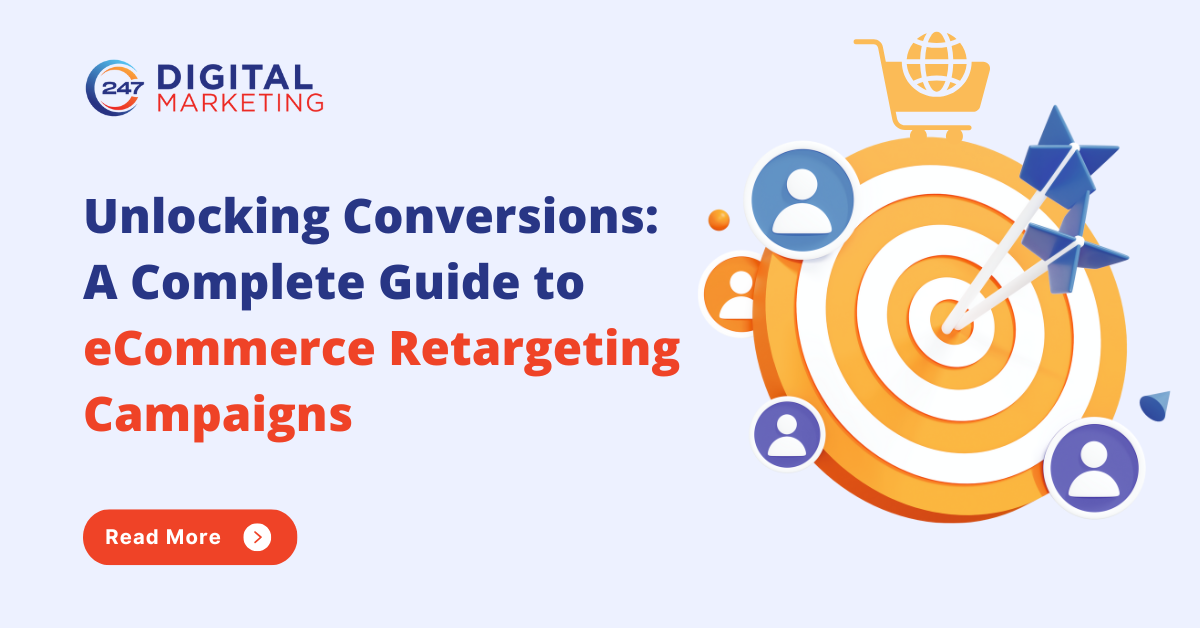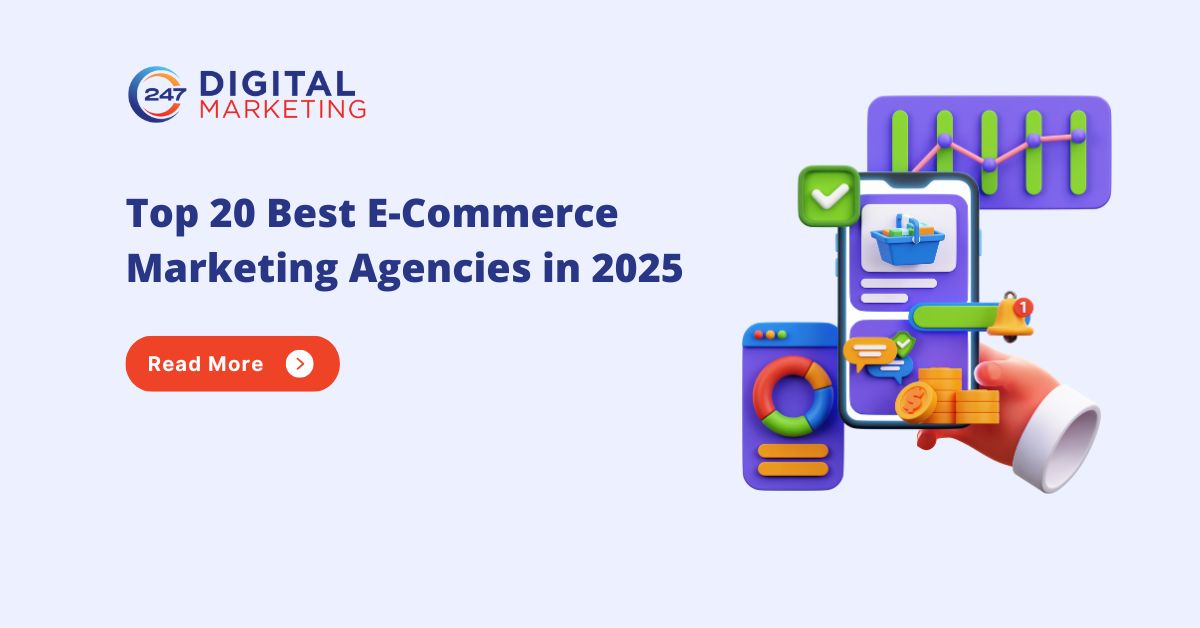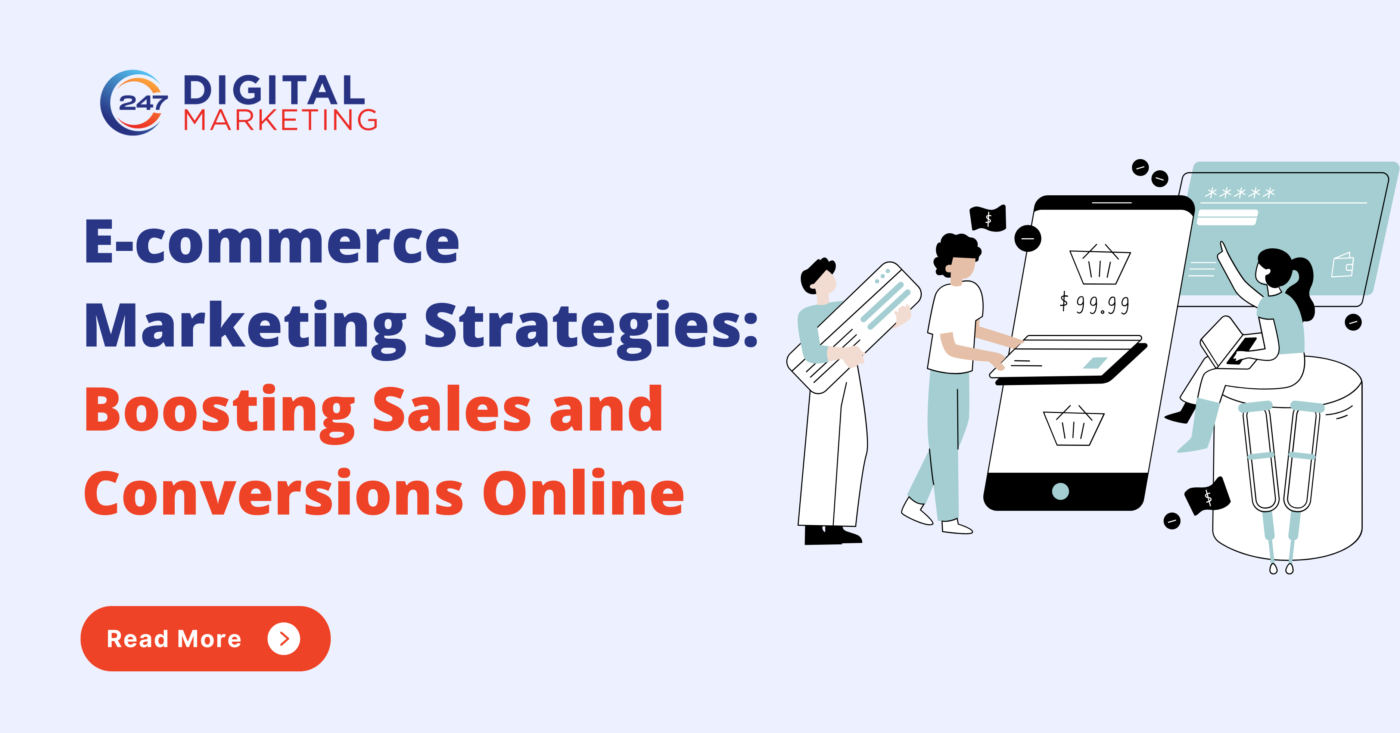Unlocking Conversions: A Complete Guide to eCommerce Retargeting Campaigns

With 70% of online shoppers abandoning their carts and only 8% returning to complete their purchase, businesses face a critical challenge in the digital marketplace. However, there’s good news—eommerce retargeting offers a powerful opportunity to re-engage those lost visitors. According to a ReadyCloud study, effective retargeting strategies can boost conversion rates up to 26%.
Retargeting (also known as remarketing) is a game-changing approach for eCommerce businesses. It helps you reconnect with potential customers who have already shown interest in your products but didn’t complete a purchase. It reinforces your brand, revives interest, and ultimately increases sales and customer loyalty.
If you’re ready to turn missed opportunities into revenue and build long-term customer relationships, this comprehensive guide is designed for you. Here’s what we’ll cover:
Topics Covered:
- What Is Retargeting?
- Types of Retargeting Ads
- Effective Formats for Retargeting Campaigns
- Audience Segmentation for Personalized Retargeting
- 6 Best Practices for Retargeting Success
- Using Data and Analytics to Optimize Campaigns
What Is Retargeting?
Customer retargeting is a form of digital advertising that focuses on individuals who have previously visited your website or engaged with your content but didn’t convert. These users have already expressed an interest, meaning they’re further down the sales funnel and more likely to buy with the right nudge.
For example, a user might browse a product, add it to their cart, then leave without completing the transaction. Retargeting allows you to serve relevant ads to that user—reminding them of what they left behind or offering an incentive to return.
By strategically presenting ads across the web or on social platforms, you keep your brand top-of-mind and guide users back to complete the purchase journey.
Different Types of Retargeting Campaigns
Understanding the types of retargeting ads you can deploy will help you choose the best tactics for specific user behaviors. Here are the most common and effective types:
1. Abandoned Cart Ads
These ads specifically target users who added items to their shopping cart but left without purchasing. They often include messaging like “Still thinking it over?” or “Don’t forget what’s in your cart!”—along with an image of the product, and sometimes a small discount to encourage conversion.
2. Win-Back Campaigns
These campaigns target past customers who haven’t made a purchase in a while. Retargeting them with reminders of previous purchases or showcasing new arrivals that match their past preferences can reignite interest.
3. Cross-Sell/Upsell Ads
Once a customer has purchased, it’s time to recommend related products. For instance, if someone buys a camera, suggest accessories like tripods or memory cards. Upselling can include suggesting a higher-end version of what they browsed earlier.
4. Dynamic Retargeting
Dynamic retargeting is an advanced technique where the ad content adapts based on individual behavior. If a user looks at a specific shoe model, they’ll see that exact product or similar ones in the ad. This personalization significantly improves engagement and conversion.
Effective Types and Formats for Retargeting Ads
Selecting the right ad format is just as crucial as the message itself. Here are formats proven to deliver excellent results for eCommerce retargeting:
Display Ads
These ads appear across networks like the Google Display Network and are excellent for keeping your brand visible as users browse other websites.
- Banner Ads: Classic rectangular ads often placed at the top or sides of websites.
- Interstitial Ads: Full-screen ads that appear at transition points; great for grabbing attention but should be used sparingly.
- Native Ads: Seamlessly blend into a website’s content, making them less intrusive and more engaging.
- Video Ads: Short videos that highlight product benefits or customer testimonials.
- Dynamic Ads: Automatically adjust content based on user interactions, showcasing the exact products they viewed.
Social Media Ads
Social platforms like Facebook, Instagram, X (Twitter), and LinkedIn offer exceptional retargeting opportunities due to their advanced audience targeting features.
- Image Ads: Clean visuals of your products served in users’ feeds.
- Carousel Ads: Allow you to display multiple products in a single ad—perfect for variety.
- Video Ads: Auto-play and grab attention quickly.
- Stories: Full-screen, immersive formats ideal for flash sales, limited-time offers, or product demos.
How To Segment Your Audience for Personalized Retargeting
One of the biggest mistakes in retargeting is serving the same ad to everyone. By segmenting your audience, you can tailor your messaging and dramatically improve engagement and conversions.
1. Behavioral Segmentation
Group users by how they interact with your website: pages visited, time spent, products added to cart, or previous purchases. This allows you to deliver ultra-relevant ads based on user intent.
2. Demographic Segmentation
Segment audiences by attributes like age, gender, income, or location. For instance, you can show different product recommendations to urban vs. rural users or create gender-specific campaigns.
3. Preference Segmentation
Focus on what users like—their product preferences, favorite brands, or shopping patterns. Unlike demographics, this segmentation speaks directly to user tastes and emotional triggers.
By working with an experienced Ecommerce Marketing Agency New York like 247 Digital Marketing, you can harness this segmentation to build high-performing campaigns that feel genuinely personal.
6 Best Practices for Retargeting Campaigns
Effective retargeting isn’t just about serving ads—it’s about doing it right. These six strategies will help maximize your ROI:
1. Set a Frequency Cap
Avoid overwhelming users with too many ads. Overexposure leads to ad fatigue, where users become blind to your message. Use frequency caps to limit how often each individual sees your ads, ensuring your messaging stays fresh and engaging.
2. Rotate Your Ads
Keep your creatives dynamic. Refreshing your ad visuals and copy regularly maintains interest and helps you identify which messaging performs best through testing.
3. Use Cross-Channel Retargeting
Engage customers across multiple touchpoints: display networks, social media, email, and even SMS. This unified approach creates a seamless customer journey, reinforcing your brand at every step.
4. Leverage A/B Testing
Test different headlines, visuals, calls-to-action, and ad formats. A/B testing helps you understand which elements resonate most and enables continuous improvement of your retargeting strategy.
5. Track Offline Conversions
If you also operate a physical store, don’t forget to connect your online ads to in-store visits and purchases. Use tools like:
- Google Ads Store Visits
- Facebook Offline Conversions
- Custom Promo Codes
- POS System Integration
These tools ensure your total return on ad spend (ROAS) includes both online and offline impact.
6. Expand Beyond Paid Retargeting
Don’t rely solely on paid ads. Email marketing, SEO, SMS campaigns, and loyalty programs can also serve as forms of retargeting—especially when you collect first-party data like email addresses or purchase history. These channels support a more holistic customer re-engagement strategy.
The Role of Data and Analytics in Retargeting
To optimize retargeting campaigns, you need to track performance carefully. Here are the most important metrics to monitor:
- Conversions: Measure how many users complete a purchase after seeing your ad.
- Click-Through Rate (CTR): Shows how engaging your ad is.
- Return on Ad Spend (ROAS): Evaluates how much revenue is generated for every dollar spent.
- Cost Per Acquisition (CPA): Helps you control your advertising budget.
- Engagement Metrics: Time spent on site, bounce rate, and page views give insights into user behavior post-click.
Use this data to continuously fine-tune your campaigns, improve ad relevance, and increase customer retention.
Take Your Retargeting to the Next Level With 247 Digital Marketing
Retargeting is more than just a recovery tool—it’s a long-term strategy for building brand awareness, increasing conversions, and nurturing loyal customers.
At 247 Digital Marketing, we specialize in creating custom-tailored retargeting strategies that align with your brand’s goals. As a trusted Ecommerce Marketing Agency in New York, we understand the nuances of online consumer behavior and how to reconnect with lost shoppers in meaningful ways.
Ready to stop losing sales and start converting more visitors? Partner with our PPC and eCommerce experts to launch a high-impact retargeting campaign that delivers real results.
Contact us today to get started!
Mitesh Patel is the co-founder of 247 Digital Marketing, LawFirm Marketing and a columnist. He helps companies like Emerson and other top Fortune 500 compnies to grow their revenue.




